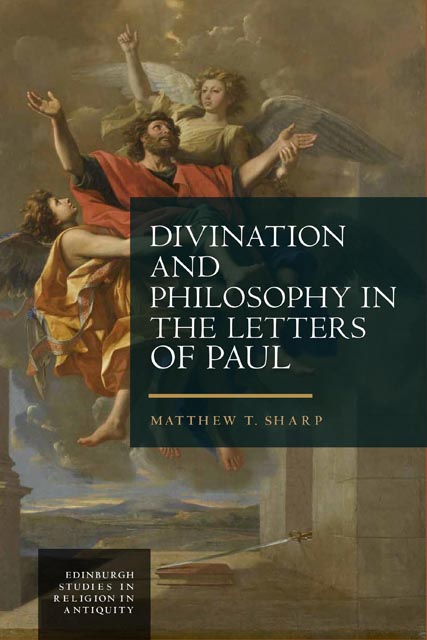1 - The Mechanics of Divination
Published online by Cambridge University Press: 02 June 2023
Summary
The Stoic philosopher Posidonius is said to have enumerated three different ways that the divine could communicate with humans in dreams.
First, the soul is clairvoyant of itself because of its kinship with the gods; second, the air is full of immortal souls, already clearly stamped, as it were, with the marks of truth; and third, the gods in person converse with men when they are asleep. (Cicero, Div. 1.64 [Falconer, LCL])
Since divination concerns communication between divine and human realms, in order for this communication to take place there must be some way in which the divine and human realms can connect and interact. In the mythical world of epic, gods and humans could more or less straightforwardly appear to each other and talk, but in the systems of the philosophers these interactions needed to be worked out in ways that fitted into their cosmological and anthropological frameworks. The quote from Posidonius outlines three ways in which these connections could be made, which Cicero expands beyond dreams to include other moments of divine inspiration.
In what follows, I will sketch a general picture of various ways in which divi-natory signs and messages were thought to be able to traverse the gap between human and divine in the ancient world, before examining how Paul’s statements about divine knowledge fit within these possibilities. Scholars have long recog-nised that Paul’s letters demonstrate a certain facility in the philosophical terms and concepts of his day.Attention has often focused on the affinities he shares with ancient rhetoric and moral philosophy.More recently however scholars have directed energy towards understanding the philosophical contours of Paul’s physics, which includes his cosmology and anthropology.
Stowers, in particular, has sought to locate Paul with some precision in the intellectual climate of the late Roman Republic and early Empire.Before the first century BCE, Hellenistic philosophy had been characterised by the rival schools of Stoicism, Epicureanism, and the sceptical Academy. But after the closing of the Academy in Athens in 86 BCE, philosophy was no longer centralised in Athens and witnessed a renewed interest in interpreting the texts of Plato and Aristotle, and recovering the doctrines of Pythagoras.
- Type
- Chapter
- Information
- Divination and Philosophy in the Letters of Paul , pp. 27 - 61Publisher: Edinburgh University PressPrint publication year: 2023



